I’d rather fish larger nymphs, but there’s a corner of my fly box dedicated to flies that imitate tiny critters too. And trout seem to ask for them often enough.
Fishing extra-small nymphs is a little different than fishing the standard fare, and for many anglers it’s hard to have confidence in them. But a few refinements in tackle, rigging and onstream approach can help make the most of the itty-bittys.
What’s tiny, anyway?
In my corner of the earth (Central Pennsylvania), a #18 nymph is small, a #20 is really small, and a #22 is as small as I ever need to go under the water.
I know that nymphs of even smaller sizes are a staple in some tailwaters. So while fishing a true tailwater, and in a few other situations, you may need to go smaller. Nevertheless, no matter how small the nymph must be, some things change when you’re nymphing with a #18 and smaller.
Let’s talk about that.
Why we don’t fish them
Something in the average angler's instinct suggests that trout want something bigger to eat. A #20 nymph seems too insignificant. How will a trout ever find it? How will it stand out in the drift enough to grab a trout’s attention?
We also like larger patterns because they’re easier to tie on. And because larger patterns can hold some built-in weight, with beadheads and lead wraps, we can often fish them without adding split shot to the leader.
Furthermore, the hook-up rate for smaller flies can be poor. It’s simply harder to stick and land trout on tiny hooks.
Why we should fish them
Honestly, I fish tiny nymphs because I have to. I fish them when trout won’t have it any other way. Going smaller, going tiny, has turned bad days to good more times than I care to count. And those times are unpredictable. It’s often said that winter is primetime for tiny nymphs, and that can be true. But I find days and situations in all seasons where catching trout requires me to downsize. Sometimes tiny nymphs are just what our trout are most willing to eat, and there’s no way around it.
Here’s another thing to consider: Tiny nymphs are often the most natural flies in our box. The next time you’re enjoying a beer and sitting on a streamside log (you should do that often) reach down and pick up a couple hand-size rocks from the riffles. You’ll find that sizes #18 and smaller are the most common wiggly things making a home on the bottom of a river. Midges, caddis, mayflies and stoneflies — even large nymphs were once small, right? They all start from eggs and grow larger. The point is, there’s a lot of tiny stuff down there, and trout know it.
Hooks and Patterns
The smaller the fly, the more difficult it can be to get a solid hookup. And while releasing a trout, we might find our #22 hook precariously grasping the slightest bit of trout skin in or around the mouth. I like to use hooks with wide gaps to compensate.
I use scud hooks for many of my small patterns. A #18, 2X- short scud hook gives me the length of a #20 and the hook gap of a #16. That helps the hook-up rate tremendously.

These are some of my favorite patterns for going tiny: Zebra Midge, WD40, Rainbow Warrior and Dorsey’s Top Secret Midge. All of these I tie on scud hooks.
I also fish a lot of RS2’s as nymphs, and I like simple Pheasant Tails down to a #20. Both of these I prefer on straight hooks with extra wide gaps.
Tippet size and type
I generally nymph with 4X or 5X fluorocarbon. But those line diameters are too thick for tiny nymphs. Sure, I can get the tippet through the eye, but that’s not the problem. The trouble is how much 4X limits the movement of a tiny fly. The line is too stiff for the nymph — it can seem like it’s attached to a steel cable. So I usually fish tiny nymphs on 6X fluorocarbon. That’s usually good enough, although on the tiniest nymphs I sometimes switch to 6X nylon, just for the extra flexibility. Softer nylon permits more movement from the nymph.
Weight
Importantly, tiny nymphs need something else to pull them down to the bottom. You can’t add enough lead or tungsten to a #20 hook to effectively get to the bottom of a river. That leaves two options: pair the tiny nymph with a larger weighted nymph, or use split shot. Either will work, and there are advantages to both. Let’s think about that for a minute.
I do best with tiny nymphs fished near the surface or near the bottom. Rarely do I fish them in the middle of the water column.
For the surface, I add a nymph as the dropper for a dry fly, perhaps 12-24 inches behind the dry. Adding a tiny nymph hardly affects the action or the casting of the dry, and it’s a great addition. At times, I add a micro split shot 4 inches in front of the nymph, just to help it break the surface and get down into the water column a bit more. Of course, adding any weight to the rig will affect the drift of the dry, but sometimes that’s okay.
I most often fish tiny nymphs near the bottom. Occasionally, I rig up two extra-small nymphs with split shot between them, but I prefer fishing a tiny nymph in tandem with a second, larger fly. And my favorite way to set that up is the Burke Rig.
The Burke rig
I know that lots of anglers, authors and guides promote similar setups, but fishing with Pat Burke is where I first saw the effectiveness of this simple solution for nymphing with tiny flies. It’s a great idea with a few nuances.
The Burke Rig is a tiny nymph trailed behind something large or brightly colored. Simple, right? Attract their attention with something big or unusual, and then show them something tiny, something safe, and something they’re used to eating.
I like to pair a stonefly with a Zebra midge, or I might pair a junk fly, like a Squirmy Wormy, with a WD40.
Let’s address a few intricacies. The parent fly can be weighted (a tungsten beadhead stonefly is a good choice), or it can be unweighted. If no weight is built into the fly, then split shot should be placed about five inches in front of the parent fly, not behind it — not between the nymphs.
The trailer line is tied off the bend of the parent fly (or as a second line from the eye of the parent). We don’t use a tag dropper here, because we want the tiny nymph to track directly behind the parent fly.
The trailer line should be 10-18 inches. I usually opt for something about a foot long. Again, the idea is to keep the tiny nymph close to the parent. Build interest with a large or bright fly, and then seal the deal with something natural. Fish on.
The Burke Rig is about trailing tiny nymphs behind larger ones. You can, of course, trail a #16 Beadhead Pheasant Tail behind a #10 stonefly; it works, but that’s not the Burke Rig. Stick with tiny, unweighted nymphs.
Sometimes, delivering tiny nymphs to the trout is the only way they’ll eat. And you can fish those nymphs with confidence by making a few adjustments in your rig and presentation.




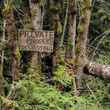

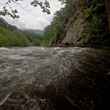



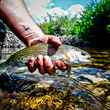


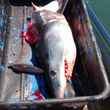
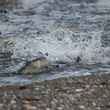

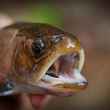


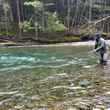
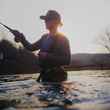
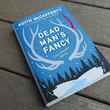


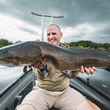

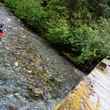
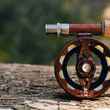

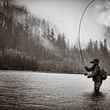
Comments
Jeff shippee replied on Permalink
I totally agree with you. I changed to this method this past season. It was a game changer. More fish than ever before. Great article. Thank you Domenick
Ed's Fly Shop replied on Permalink
Good article, Domenick. This can be a real game changer.
Cawoonache replied on Permalink
Great advice. Even for big trout this time of year. I will fish a #20 zebra midge below a Pat’s Rubberleg here in southeast Idaho on the South Fork as well as on the lower Henry’s Fork all winter long.zxCSC
Thomas Conigliaro replied on Permalink
Much food for thought...which I will try in 2018 for sure.Never heard of the Burke rig but sounds intriging. I always enjoy your articles
Tom C
Aka AFISHN on PA FF forums
Kevin replied on Permalink
Excellent article. I have been successfully using the Burke rig the last two winters. My best luck has been with a Rainbow Warrior or Lightning Bug with an RS2 trailer.
Kyle Jarnagin replied on Permalink
Dominick on the San Juan #20 is large and the smallest I’ve tied and used is #26. However, I know of one guide who ties #24. If you want to be successful and catch large fish on a heavily fished river it’s necessary. I alway put a bit larger split shot 6-8” above the first fly and a smaller split shot between the two flys. Depending where I am and what flies I am using will determine tying off the head or hook of the first fly. I average 17” Brownies or Bows all day any time of year. Thanks for the read.
Greg Cater replied on Permalink
Great article, I am new to fly fishing and this is a big help. Any suggestions on where I can purchase small fly patterns that are on scud hooks like you suggest. I fish the Truckee River which can be quite challenging. I hope this helps with the hook-up rate this summer.
Paul Mangeot replied on Permalink
Another fine article from Dom! He’s been helping us PA folks hook up with fish consistently for years. Going to try this next time out.
Pages